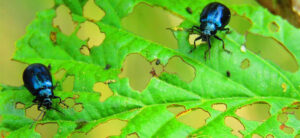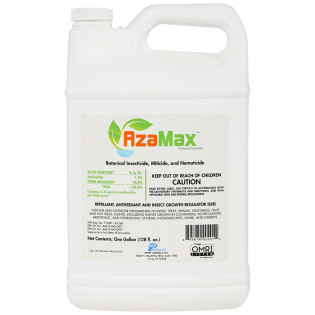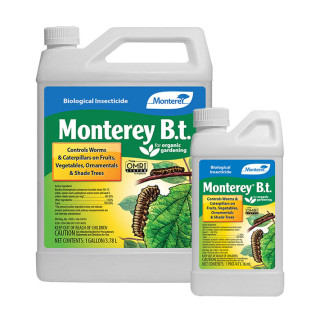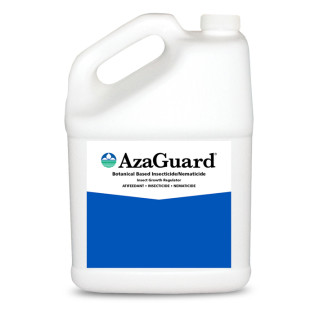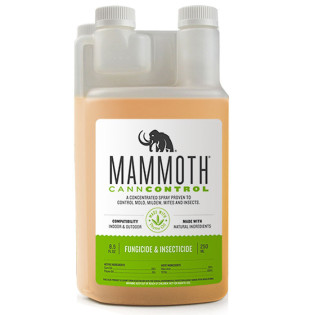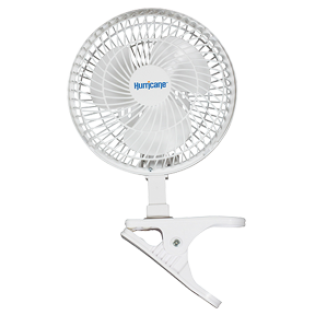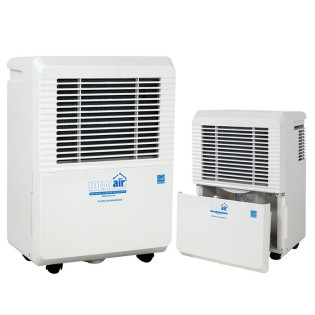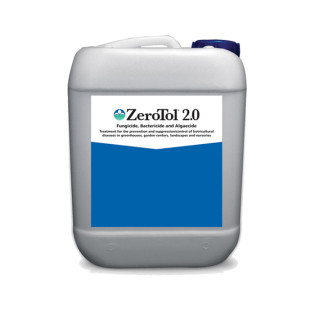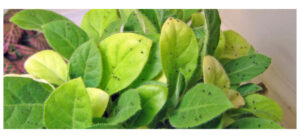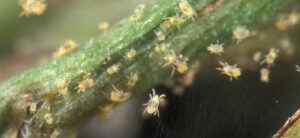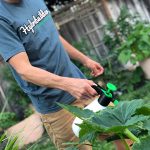
If you properly seal your indoor grow room and maintain ideal environmental conditions, you should be able to avoid most common pests and diseases.
Sometimes, however, insect and disease problems are inevitable, even if you are growing indoors.
If you are growing outdoors, you will be even more susceptible to these issues.
Luckily, we have put together a guide on how to prevent, identify, and eradicate the most common indoor and outdoor gardening pests!
Prevention of pests and diseases in the grow room
It's been said that an ounce of prevention is worth a pound of cure and in dealing with pests, this is true. Follow these tips for keeping pests away:
- Maintain proper environmental conditions (see grow room atmosphere)
- Quarantine new plants to your grow until you are sure that they are free from pests and disease
- Clean grow areas thoroughly between growing cycles to remove any dead or decaying plant matter
- Sterilize hand tools and instruments especially if they move from one grow area to another to prevent cross contamination
- Do not allow pets or animals to enter grow areas
- Always check clothing for pests and contamination before and after leaving grow areas
- Companion planting can help to deter pests naturally
- If an infected plant is found it should be removed and quarantined immediately to prevent spread
- Certain grow media can deter pests such as those that contain diatomaceous earth
- Neem oil is a preventative natural deterrent.
The most common gardening pests
Jump to: Aphids | Caterpillars | Gnats | Spider Mites | Thrips | Whiteflies | Slugs & Snails
It's always a good idea to make sure if you are spraying to turn your grow lights off until spray has had a chance to dry. Droplets on leaves act like a magnifying glass to focus light and will burn your leaves and plants.
This also helps to prevent residue build up on lights and bulbs as heat from bulbs will cook residue onto them. In larger grow areas, sprayers and foggers are excellent at dispersing product.
NOTE: Always observe manufacturers warnings and safety precautions in handling and applying products. This includes flushing plants and allowing sufficient time between application and harvest.
Aphids

What to look for: Also known as “plant lice” these guys are tiny.
You can spot them with the naked eye, but to verify its really aphids you need a magnifying glass.
They come in a barrage of colors, but can typically be found in a grey to black shade. Sometimes, they're a translucent green color.
Why they’re bad: They suck sap from your plants causing them to turn yellow. They can also attract ants with the honeydew they release.
How to get rid of them: Apply a spray multiple times a day for at least a week up to 10 days.
Check out our complete guide on how to get rid of aphids. We'll give you an in-depth look into identifying, preventing, & eliminating these pesky buggers.
Caterpillars

What to look for: Chewed leaves or holes in leaves, caterpillars enjoy softer tissues and tend to go for smaller branches on the lower parts of buds.
Small black fecal remains can also be a signal that caterpillars have been present, look for this near the buds of the plant.
Butterflies tend to lay their eggs at the top part of the plant so look at this area in an outdoor grow to see oval or circular eggs that are often white or yellowish in color.
Why they’re bad: Not only do they damage buds and harm the plant. They also leave behind a fungus called botrytis that rots buds from the inside.
How to get rid of them: Apply Safer Brand Caterpillar Killer to remove caterpillars.
We have a complete guide on how to get rid of caterpillars, so if you are struggling with them, give it a read. You will have no problem eradicating this pest afterwards.
Fungus Gnats

What to look for: Tiny black flies hanging around sweet things like nutrients and grow media.
Why they’re bad: They eat your plant roots and grow media.
How to get rid of them: Sticky traps will attract and capture them. It’s a good idea to make sure your grow media isn’t overly damp. Nematodes are a predatory insect that will eat gnats but they can also cause root damage. The best solution is to use a gnat specific spray.
Read our full guide on fighting fungus gnats if you encounter this pest. It will be a tremendous aid in treating the issue, ensuring you regain control of your garden.
Spider Mites

What to look for: Tiny yellow specks on your leaves. Bad infestations will have spider webs around buds and stems.
Why they’re bad: They suck the sap from your plants and one female can lay 100s of eggs in a few weeks.
How to get rid of them: Observe proper grow room sterilization protocols. Quarantine new plants introduced to your grow, and thoroughly clean any objects or plants that enter your grow area.
Wipe your feet and make sure your clothes are free from contamination before entering your grow area. Use a spray specifically targeted to spider mites.
Even after you see no evidence of mites use a different type of spider mite spray one more time in order to prevent a reinfection.
Spider mites can become resistant to a particular type of spray over time so it’s important to vary your tactics each time in order to kill them all, even after you don’t see any evidence of mites.
Spider Mites are easily one of the most common grow room pests indoors and outdoors.
That's why we have an entire guide on spider mite treatment. We recommend you check it out for the prevention tips alone!
Thrips

What to look for: Silver or bronze colored scars on leaves. They like eating developing flowers and are seen in greenhouses more than outdoor grows.
While they do have wings they rely more on wind to transport themselves from site to site.
Why they’re bad: They deprive leaves of chlorophyll and cause them to turn brown and crumbly. They are also known to transport plant viruses.
How to get rid of them: Use a spray specially designed to get rid of thrips. We recommend AzaMax and Mighty Bomb.
If you think you may be dealing with these pests, you'll need to act quick. Check out our complete guide on how to get rid of thrips on your plants.
Whiteflies

What to look for: Tiny white moth-like creatures flying around your plants and on the underside of leaves.
Why they’re bad: Whiteflies cause diminished chlorophyll creation and spread disease.
How to get rid of them: Use sticky fly paper to remove adults in the air, remove leaves that are more than 50% damaged, spray with insect repellant.
One of the best methods to prevent whiteflies is to plant zinnias along with your plants and observe proper grow area quarantine procedures.
Never bring in new plants without first inspecting them for infestation and always inspect and clean tools and clothes to remove contaminants.
Check out our complete whitefly control guide for an in-depth look at preventing and eliminating whiteflies from your grow room or garden.
Slugs & Snails

What to look for: Slime trails and slimy creatures, usually between ¼” to 3” in length.
They are a variety of colors including white, brown, yellow and can be spotted or striped.
Why they’re bad: They create holes in leaves and, if left unchecked, will eat plants down to the roots.
How to get rid of them: Keep the areas around plants as dry as possible. Bleach sand and salt make an effective deterrent. Broad spectrum pest control gives the best results.
Grow Room Disease Control
Insects are only part of the battle. You will also need to watch for diseases in the grow room, which are arguable more prevalent than pests.
Before we discuss the most common plant diseases, lets touch on prevention again.
Grow Room Disease Prevention
While no preventative measures will be 100% effective, you will greatly reduce your chances of disease by watching a few things.
Maintaining proper humidity and temperature levels, using clean and safe growing mediums, and keeping a clean growing space will go a long ways.
Using dehumidifiers will keep moisture levels low, but there are other ways to control this. Feed at the proper times, and clean up spills quickly. If you are over watering, you will run into humidity issues.
The most common plant diseases
Even the most well-tended gardens can occasionally suffer from some sort of disease.
Often times, however, a nutrient deficiency will be the true culprit. Check here to make sure you are not experiencing a simple nutrient deficiency first!
These are some of the disease almost every gardener will encounter at some point or another.
Blossom end rot

This is a very easy disease to spot but a rather time consuming one to adequately treat.
Blossom end rot is recognizable by a small rotted spot on the bottom of the flowers.
Sometimes, it is overlooked because of over-watering or an over abundance of rain causing conditions that may result with rotted fruit.
Blossom end rot is caused by a deficiency of calcium which results in the fruit rotting as it is being formed.
There is no quick fix on this, but a Cal-mag supplement is a great start.
You will have to take the time to do some soil amendments to increase calcium levels. This can be achieved through calcium rich soil amendments and by mixing in bone meal or other organic matter containing calcium.
Powdery mildew

This very common condition is a fungal infection which occurs in cool, damp weather.
It first appears as a spotting or yellowing of old growth leaves.
Powdery mildew spores when humidity is at or approaching 100%, and it can overwinter on dead plants or compost.
The first line of defense is trimming away sick or infected leaves and dispose of them.
It will also help to keep the compost pile away from the garden in a secluded area. It is also important not to use the compost unless it is completely broke down and rotted.
Then, use a fungicide specifically for PM. This disease is so common, we wrote an entire guide on preventing and fighting it. Learn more about powdery mildew here.
Root Rot

Oftentimes, root rot is the result of poor drainage and aeration. This is where the roots become waterlogged, and "drown".
If you are growing in a pot with minimal aeration and drainage capabilities, this will be more common.
To identify root rot, examine the root zone. If your roots appear brown, slimy,
You can combat root rot by using fabric or air-pots, since these feature superior aeration and drainage.
Another method for preventing root rot is simply monitoring your watering better. If you don't over water, you are very unlikely to experience this issue.
Certain growing media will be more susceptible to contributing to this disease. You can learn more about which growing mediums are best in our definitive guide.
Unfortunately, if you are experiencing root rot, there is little you can do to right the ship. You can bite the bullet and try and harvest what you can, or discard the plants and start over.
Or, try grabbing one of the products above specifically formulated to clean the root mass.
You can check out our complete guide to getting rid of root rot to prevent it from happening in the first place, and how to go about treating it.
Fusarium wilt

Perhaps the most dreaded disease of them all is Fusarium wilt.
It almost always hits in the seedling stage, before the plant is fully mature.
Fusarium wilt is a soil-born disease, which can remain present for years and is difficult to get rid of or completely prevent.
Your best bet, when struck with it, is to stick with resistant varieties or relocate where this family of plants are grown because it easily takes a few seasons before it is gone.
Dispose of any pot or flats that the plants were originally planted in and begin to improve the soil with compost and other organic matter.
Check out our complete guide on eliminating fusarium wilt. It will help you differentiate it from other plant illnesses, prevent it, and should you encounter it, treat it.
Leaf spot

Leaf spot is another fungal pathogen that hits many a garden. It is recognizable by the dark spotting of older leaves.
It rarely affects just one family of plants and can strike everything from a fruit tree to vegetables ranging from tomatoes to lettuce. There is also a bacterial leaf spot which can infect annual flowers like petunias or pansies and fruits such as strawberries.
Leaf spot almost always begins with a nursery seedling so be careful to inspect the plants carefully for any sign before you purchase.
It can be prevented by keeping the garden clean of dried leaves or dead plants that the pathogen can cling to. Completely rake all debris away from the plants and do a heavy mulching of clean straw or hay.
If you want to learn more about this interesting plant illness, check out our complete guide on preventing and getting rid of septoria leaf spot.
Rust

The bad news about rust is that there are over 500 separate known strains of it that can strike the garden. It almost always affects mature plants and leaves, and normally occurs later in the summer.
Rust is identified by the raised rusty colored spots appearing on mature leaves. It occurs in very sunny conditions following a heavy rain or watering. An infestation happens because of moisture evaporating off the leaves in the full sun.
Your best course of action is to remove and dispose of infected leaves and adapt an improved, more direct watering system. Avoid using overhead sprinklers in full sun and switch to a more controlled drip irrigation system.
Unless you’re growing heirloom varieties try to stick with the resistant varieties that are available.
Combating grow room diseases
If you are experiencing a grow room disease, don't worry! Many of these can be eradicated easily. Some, such as root rot, you will just have to try and live with, however.
Once you have properly identified which disease you are dealing with, just use the right corrective measure. We have a number of fungicides at Hydrobuilder, many of which are organic.
If you are concerned about what you put onto your plants, we even carry OMRI listed fungicides and pesticides. Try using neem oil, insect traps, and sulfur burners for natural insect and disease control!
If you aren't sure where to start, our year end review of the best garden insecticides & fungicides is a great place. We break down which products to use in which instances.





